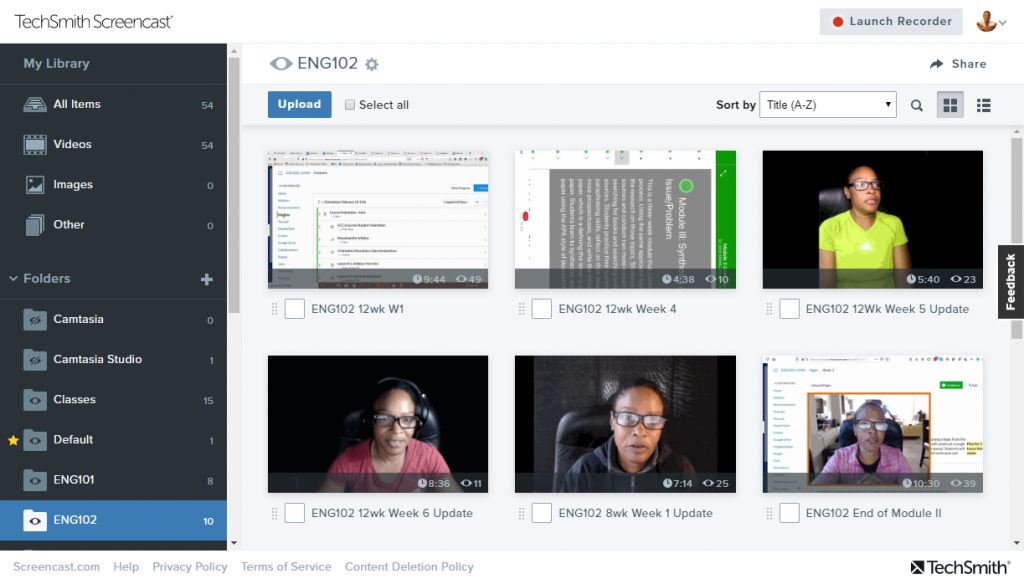I still chuckle when I think about every teacher I work with is now doing some form of remote or online teaching. I know it’s not a laughing matter, but I can’t help it. After spending four years as eCourses coordinator at the college, I know the reality of that statement. I’m sure everyone is doing their best. However, I can’t help but think about that select few who wanted to teach online because they thought it would be easy. Well, it’s not so easy after all, especially when you only get two weeks to do it.
It’s easy to post content (documents) online, and most LMS’s make it easy to record video and audio. But the hardest part is engaging students. How do you even know they are watching, listening or reading what you put online? I hope I’m not freaking people out, but trust me, they’re not watching, listening and reading all that stuff you just put in Canvas. They are just looking for the stuff the “counts.” I know I sound pessimistic, but I speak from experience. When I first started teaching online over 15 years ago, the first thing I noticed was that if there was no point value attached, it got ignored. That included textbook chapters, handouts, content pages in Canvas, and yes, even YouTube videos. I was shocked. They don’t like my videos? Did anyone even watch them?
I couldn’t really tell if students were engaging or not with my content, but they were missing huge gaps in knowledge that would have come from engaging with that content. I constantly found myself asking in my feedback, “Did you watch the video?” or “Did you read the handout?” It was definitely frustrating especially since I made a ton of videos. Once I got fed up with that I decided to change the design of my courses. I now have several different formats depending on the course. I made a couple of videos showing how I changed things up that you can watch below, but I’ll summarize here first.
For my ENH114 African American literature class where reading is crucial (Duh!), I changed the course so that every reading is an assignment. Yes, you read that right. Every single reading is an assignment. I call them lessons, and each lesson either has reading handouts, video or audio and then something for students to do. For example, in Lesson 1.1.1 Origins of African American Language, students watch a YouTube video and then write a summary about what they learned. Simple. I create this by using Assignments in Canvas, embed the video, write my instructions and then set the assignment to accept text and uploads for submission. The best part is I didn’t have to make the video. Thank you internet and YouTube.
Another example from the ENH114 class is a lecture I wanted students to read. Again, I made it a lesson: Lesson 1.2.1 Importance of Negro Spirituals that included a recording of me reading the lecture as well as the text of the lecture, and then asks students to answer a question about the content. I use rubrics so the students know what I’m looking for, and it makes it easier for me to grade. The idea that everything I want students to do is graded in some way can be daunting, but using rubrics makes quick work of it. I’ll demonstrate more ways that I engage students in this class in the video below.
For my freshman comp classes, I have a slightly different approach. Not everything I want for them to read and do is made into a lesson, but I do wish that would work. However, I do consistently make some of the content into lessons. You really need to have something for students to engage with on a weekly basis. If you don’t, students get in the habit of “skipping” weeks. Having assignments with weekly due dates draws them into the course. They don’t have to be much, just something that says, “Hey, remember you have this English class over here.” You can see more from these courses in the video below. You can find the YouTube Series I mention here: Crash Course Navigating Digital Information.
Lastly, I teach a hybrid (used to teach a hybrid) JRN203: Writing for Online Media course. Luckily for me, I design all my courses as online courses, so I only had to make a few adjustments in this course to transition to online. The biggest change was adding more online discussions. Oh, I know. That sounds so boring, especially since students hate online discussions. But these discussions are fun. I use FlipGrid. It’s a social learning platform that allows educators to ask a question, then the students respond in a video. Students are then able to respond to one another, creating a “web” of video discussion. They’re fun and students really like these discussions. Some are a little shy at first, but they quickly get over it. I got permission from my students to show a discussion they are working on currently in class. See below.
The reality of the situation is I didn’t create all of this in two weeks. These are things I’ve added as I’ve taught over the years. For many faculty out there now rushing to move content online, my best advice is to pick one thing you can add now to help engage students, and as the semester continues on, consider what else you might be able to add. You can’t do it all now, but just one thing might prove helpful.
McGraw-Hill Connect & YouTube




 I’ve seemingly written about everything already over the past 20 years. That’s how long I’ve been blogging. My
I’ve seemingly written about everything already over the past 20 years. That’s how long I’ve been blogging. My